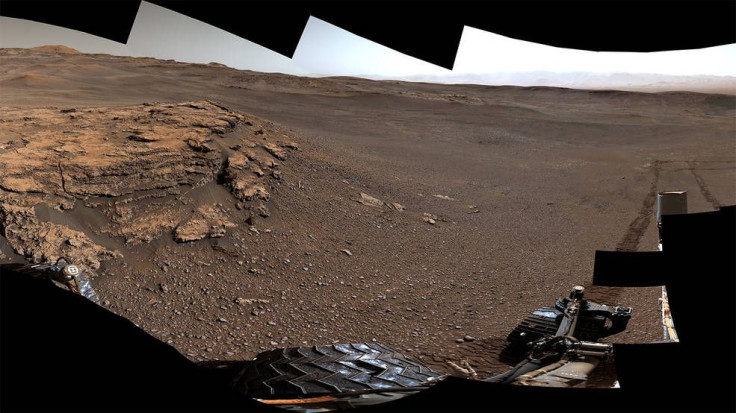NASA Mars Rover Captures 360 Panoramic View Of Red Planet's 'Teal Ridge' [WATCH]

NASA’s Curiosity rover has released a stunning panoramic view of a region on Mars that shows the dynamic landscape of the Red Planet. The region is located near an area rich in clay deposits that were formed by water on Mars.
According to NASA, Curiosity is currently exploring a portion of Mount Sharp inside Gale Crater. While going through the region, the rover came across a clay-bearing region. The agency’s scientists noted that this region was formed billions of years ago when liquid water in the form of streams and lakes existed within the crater.
The presence of water led to sediment deposits within the lakes and stream, which then created clay minerals in the area. Traces of the clay were first observed by the Mars Reconnaissance Orbiter before Curiosity was launched by NASA. Through the rover, the space agency is now able to conduct more detailed studies in the area.
“This area is one of the reasons we came to Gale Crater,” U.S. Geological Survey’s Kristen Bennet, who serves as one of the lead scientists on Curiosity’s clay-hunting mission, said in a statement.
“We’ve been studying orbiter images of this area for 10 years, and we’re finally able to take a look up close,” she added.
Aside from the clay-bearing region, Curiosity also explored an area known as Teal Ridge. Similarly, Teal Ridge displays traces of ancient bodies of water. These were detected by the rover in the rocks scattered in the area as well as the changes in the landscape.
In the 360-degree panoramic video provided by Curiosity, viewers can observe the various features of Teal Ridge. These include the rim of the Gale Crater, the clay-rich region and the upper portion of Mount Sharp.
Valerie Fox, who co-leads Curiosity’s campaign, noted that the area offers the scientists a glimpse of the dynamic environmental condition that once existed on Mars.
“We’re seeing an evolution in the ancient lake environment recorded in these rocks,” Fox said. “It wasn’t just a static lake. It’s helping us move from a simplistic view of Mars going from wet to dry.”
“Instead of a linear process, the history of water was more complicated,” she added.
© Copyright IBTimes 2024. All rights reserved.





















